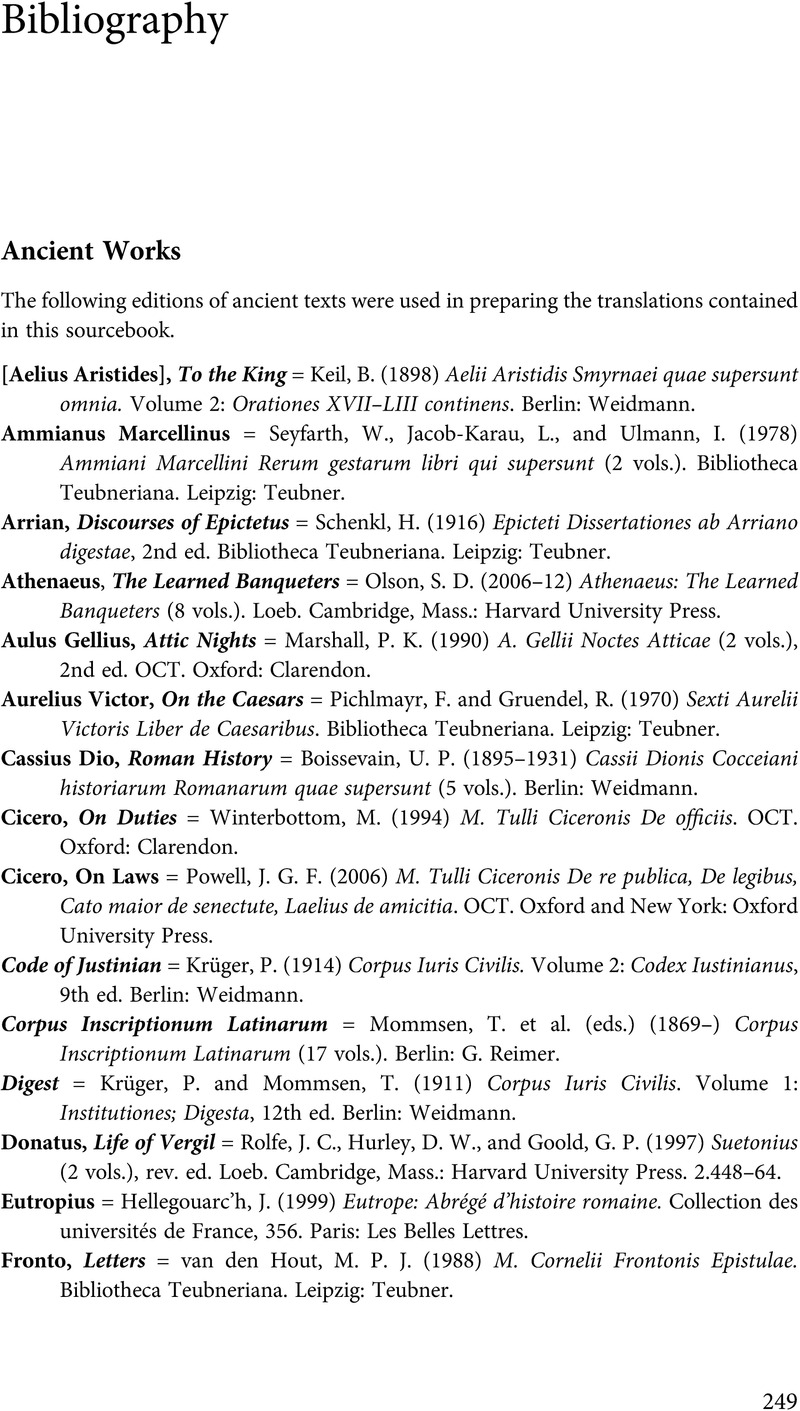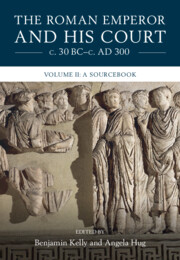Book contents
- Frontmatter
- Dedication
- Contents
- Figures
- Contributors
- Acknowledgements
- Conventions
- Abbreviations
- List of Roman Emperors to c. AD 300
- Register of Prominent Courtiers
- Major Authors and Literary Works Translated in this Volume
- Glossary
- Introduction: The Sources for the Roman Court
- 1 Conceptualizing the Roman Court
- 2 Court Spaces
- 3 Court Relationships
- 4 Rituals and Ceremonial
- 5 Picturing the Court
- 6 Narratives of Court Crises
- Bibliography
- Index of Sources
- Index of Personal Names
- General Index
- References
Bibliography
Published online by Cambridge University Press: 29 September 2022
- Frontmatter
- Dedication
- Contents
- Figures
- Contributors
- Acknowledgements
- Conventions
- Abbreviations
- List of Roman Emperors to c. AD 300
- Register of Prominent Courtiers
- Major Authors and Literary Works Translated in this Volume
- Glossary
- Introduction: The Sources for the Roman Court
- 1 Conceptualizing the Roman Court
- 2 Court Spaces
- 3 Court Relationships
- 4 Rituals and Ceremonial
- 5 Picturing the Court
- 6 Narratives of Court Crises
- Bibliography
- Index of Sources
- Index of Personal Names
- General Index
- References
Summary

- Type
- Chapter
- Information
- The Roman Emperor and his Court c. 30 BC–c. AD 300 , pp. 249 - 276Publisher: Cambridge University PressPrint publication year: 2022



